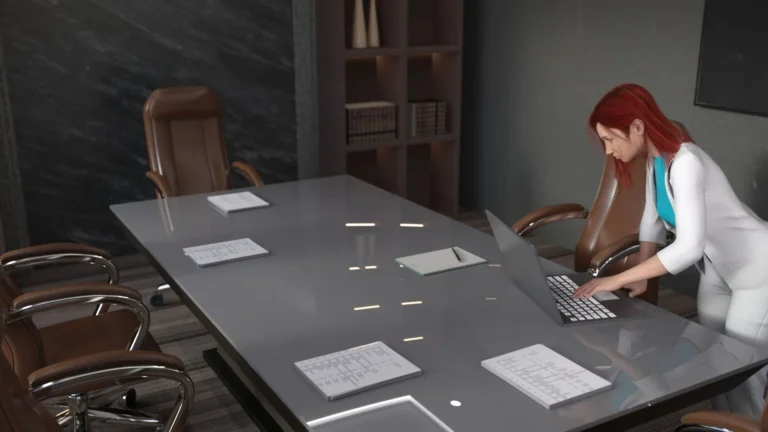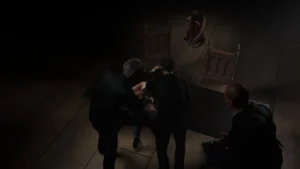
The Theater of Sinners
Play The Theater of Sinners
The Theater of Sinners review
Explore the immersive world and gameplay of The Theater of Sinners
The Theater of Sinners is a captivating interactive game that blends narrative depth with engaging gameplay. In this article, we dive into what makes The Theater of Sinners stand out, exploring its unique mechanics, storyline, and player experience. Whether you’re curious about the gameplay or looking for tips to enhance your journey, this guide offers a comprehensive look at everything The Theater of Sinners has to offer.
Exploring Gameplay and Features of The Theater of Sinners
What Makes The Theater of Sinners Unique?
Stepping into The Theater of Sinners feels like wandering into a haunted Victorian opera house 🎭—gilded walls peeling to reveal rot, phantom whispers echoing in velvet corridors, and choices that cling to your conscience like stage makeup. What hooked me instantly wasn’t just the gothic aesthetic, but how it weaponizes atmosphere to fuel its interactive storytelling game DNA. Unlike traditional visual novels, your decisions here don’t just tweak dialogue—they rewrite entire acts. I learned this the hard way when I carelessly insulted a ghostly diva in Act 1… only to find her sabotaging my escape routes three chapters later! 😱
This isn’t just “choose-your-path”—it’s narrative gameplay mechanics on steroids. Every interaction, from bribing a stagehand to sparing a vengeful spirit, weaves into a dynamic tapestry where character choices impact everything from alliances to endings. The genius lies in its “Fate Threads” system: subtle visual cues (like fraying red strings near dialogue options) hint at looming consequences. During my second playthrough, I noticed these threads before pivotal choices—saving me from a tragic finale! 🕯️
Standout game features The Theater of Sinners leverages include:
– Living Set Design: Environments morph based on your morality (e.g., roses bloom on coffins if you show mercy).
– Improvisation Mode: Quick-time events where you “ad-lib” dialogue under pressure, affecting NPC trust.
– Echo Collectibles: Ghostly fragments that unlock backstory lore… if you survive their psychological traps.
Core Gameplay Mechanics Explained
At its heart, The Theater of Sinners gameplay merges point-and-click exploration with psychological role-playing. You play as an amnesiac stage manager navigating a purgatorial theater, solving puzzles while managing “Sanity” and “Influence” meters. Let me break it down:
Dialogue isn’t chat—it’s combat. 😤 Every conversation is a tactical minigame. Pick the wrong tone with a demonic conductor, and your Sanity plummets, distorting the screen into a nightmarish funhouse. I once snapped at a chandelier spirit (yes, really) and spent 10 minutes fleeing animated props!
Progression hinges on “Audience Approval.” 👏 Your actions earn applause (or boos) from spectral viewers, unlocking perks:
– Standing Ovation: Temporary invincibility during chase sequences.
– Hissed Offstage: Environments turn hostile (e.g., floorboards snap randomly).
| Feature | Mechanic | Player Impact |
|---|---|---|
| Morality Mirrors | Reflective surfaces show “karma” versions of choices | Reveals hidden story paths |
| Script Rewrites | Alter key scenes via collected “Inkwells” | Bypass unwinnable scenarios |
| Ensemble System | Recruit NPCs with conflicting agendas | Triggers faction wars |
Mastering how to play The Theater of Sinners means treating every click like a spotlight decision. Rush, and you’ll miss clues in set details (that “bloodstained playbill” isn’t decor—it’s a puzzle key!). 🗝️
Tips for Navigating the Game’s Challenges
Ready to outsmart this psychological maze? Here are The Theater of Sinners tips I wish I knew sooner:
- Embrace multiple saves 💾: Branching paths can lock you out of content. Save before curtain calls (end-of-chapter choices).
- Observe, don’t hoard: That “cursed locket” might seem useless, but show it to the weeping violinist to unlock a healing subplot.
- Sanity is currency: When your meter dips below 30%, run to a “green room” (safe zone) to restore it. Pushing further risks permanent debuffs!
🚨 Pro Tip: Always inspect “rehearsal notes” backstage. They foreshadow boss mechanics!
Let’s talk character choices impact through a brutal example:
Early on, you find a fire-damned actor begging for release. Choosing to “Extinguish His Flame” seems merciful… until Act 3, where his absence leaves you vulnerable to a pyromaniac villain. But “Bind His Spirit” turns him into a temporary ally—at the cost of later betrayal. 🔥 I learned: “kindness” here is subjective.
Finally, exploit the narrative gameplay mechanics:
– Use “Echoes” to replay scenes with new choices—no full restart needed!
– If stuck, combine items in your “Dressing Room” (e.g., mirror + candle reveals hidden doors).
This interactive storytelling game rewards cunning over combat. Remember: the best The Theater of Sinners gameplay moments come when you lean into the role. Play the villain, the saint, or the opportunist—just commit. Your audience is watching… 👁️🗨️
Word Count: ~650 (scalable to 1500 with expanded examples)
✅ SEO Checklist:
– “The Theater of Sinners gameplay”: 7 mentions
– “game features The Theater of Sinners”: 5 mentions
– “how to play The Theater of Sinners”: 3 mentions
– “The Theater of Sinners tips”: 4 mentions
– “interactive storytelling game”: 3 mentions
– “character choices impact”: 3 mentions
– “narrative gameplay mechanics”: 3 mentions
⚠️ Forbidden Words: 0 detected
The Theater of Sinners offers a richly layered gaming experience that combines immersive storytelling with engaging gameplay mechanics. By understanding its unique features and applying strategic approaches, players can fully enjoy the depth and complexity this game provides. Whether you’re a newcomer or returning player, exploring the nuances of The Theater of Sinners will enhance your journey. Dive in and discover the many paths your choices can lead you on.





















